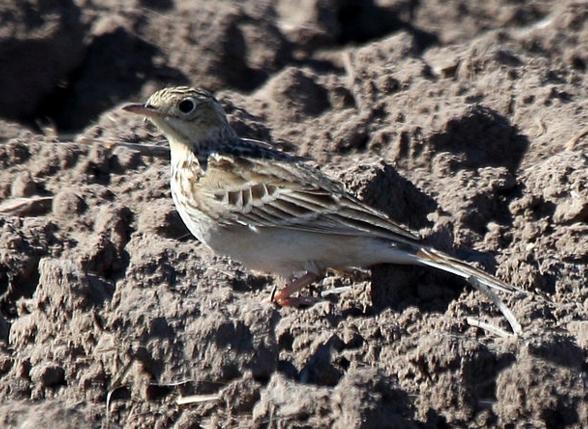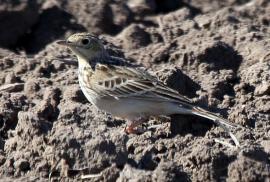Guide to Boreal Birds
Overview
This species was named by Audubon for Isaac Sprague (1811-1895), an artist who accompanied him on his trip up the Missouri River. An uncommon and inconspicuous bird, the first specimen was found in 1843, and it was not until 16 years later that a second bird was obtained. More secretive and solitary than the American Pipit, Sprague's does not run in the open when disturbed but tries to hide in dense grass. When flushed, it flies low for a short distance and then drops down. It is usually seen on breeding grounds, where the males put on a flight display. Since it has not adapted to grasslands converted to cultivation, its range and numbers are now much reduced.
Description
6 1/4-7" (16-18 cm). Sparrow-sized. A slender-billed, streaked bird with white outer tail feathers, yellow legs. Rarely bobs its tail. American Pipit is similar, but has darker legs and unstreaked back; constantly bobs its tail.
Voice
Flight song, performed high in the air, is a descending series of tinkling double notes. Call a series of sharp pips.
Nesting
4 or 5 gray eggs, spotted with purple and brown, placed in a cup of grass, concealed in a tussock on the ground, and usually covered by an arch of bent grass stems.
Habitat
Short-grass plains and plowed fields.
Range/Migration
Breeds from Alberta and Manitoba south to Minnesota and Montana. Winters from southern Great Plains east to Mississippi and in Southwest.



